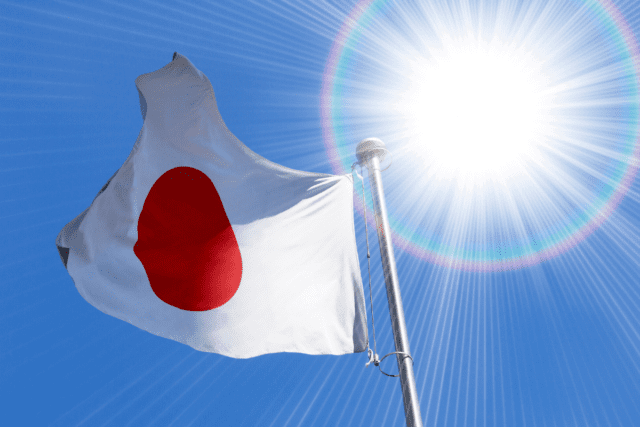
April 7, 2022
Innovative deal structures will be key to growing corporate renewable energy PPAs in parts of Asia
By Elana Knopp, Senior Content Writer

Avery Hammond, Renewables Supply Analyst at Edison Energy, discusses the growth of corporate renewable energy PPAs in Asia, how data centers are driving this uptick, and why innovation will be key to meeting the region’s bold sustainability targets.
Parts of Asia are poised to become key markets for renewable energy development and investment over the next decade, with capacity expected to increase by about 2 terawatts by 2030, according to a report released by Boston Consulting Group. This growth has been spurred by rising populations, strong economic growth, and significant potential due to the low market penetration of renewables.
Solar and wind are projected to be a primary focus for governments across Asia-Pacific (APAC) as they push renewable energy agendas, as well as for corporates expanding their portfolios in the region. APAC could become the second-biggest offshore wind market, with capacity reaching 78 GW by 2030, according to the analysis.
Specifically, corporate renewable power purchase agreements (PPA) are beginning to play a bigger role in APAC’s decarbonization efforts, according to Wood Mackenzie. Corporate renewable PPA volume more than doubled to 3.8 GW in 2020 compared to the previous year, despite project delays from labor shortages and logistic disruptions from the Covid pandemic, according to the analysis.
While India, Australia and Taiwan are current leaders in APAC’s corporate renewable procurement market, Japan and Singapore are expected to catch up quickly.
Japan, which has a goal to achieve net-zero greenhouse gas (GHG) emissions by 2050, is now a major player in the renewable energy market. This has been driven by the shuttering of most of Japan’s nuclear reactors in the wake of the 2011 earthquake and tsunami that damaged the Fukushima Daiichi nuclear power plant. Growth has also been spurred by significant subsidies for renewable energy projects.
Singapore, too, can expect major momentum around corporate PPA deals. In February, the Government of Singapore upped its sustainability target and is now aiming to reach carbon neutrality by mid-century alongside Malaysia, which plans to meet its 2050 goal via shifts to renewable energy, carbon pricing, and a pledge to halt the opening of new coal plants.
Innovative deal structures have gained popularity in the region. Some corporates are now choosing to aggregate their energy demand to jointly negotiate PPAs, while smaller-scale PPA projects are increasingly being grouped within funds or other investment structures to create a portfolio attractive to lenders.
“Asia is quite different from the U.S. market in that corporate PPAs are not very common at all, so companies have to get quite creative about what solutions they can arrive at,” said Avery Hammond, a Renewables Advisory Analyst at Edison Energy. “For example, in Japan, PPAs can only happen through a retailer, so a lot of corporations in Japan looking to procure renewable energy do it through onsite solar and broker PPAs through that.”
Beyond ambitious decarbonization targets set by governments and companies, falling renewables premiums and rising power tariffs in Asia Pacific are also making corporate renewable PPAs more attractive.
PPAs in the region have largely been driven by corporate giants like Amazon, who signed its first PPA last year in Japan to power more of its Web Services data centers with solar energy. The deal, made with Mitsubishi Corporation, is slated for 22 MW of solar capacity for 10 years, with the projects expected to launch commercial operation in 2023.
“Amazon is kind of a pioneer of corporate PPAs in Japan,” Hammond said. “That deal aggregated a group of offsite solar structures around Tokyo and Tohoku, so they figured out a way to cover their load with ground-based solar. You can see the kind of creativity that is required. A lot of the world’s supply chain is located in the APAC region, so data centers being built there and larger international companies requesting that their supply chain also pursue renewable energy are why we are seeing more corporate PPA deals.”
Evolving policies have also helped drive the growth of renewables in the region. Last year, Malaysia’s Ministry of Energy and Natural Resources announced its New Energy Metering Program (NEM) 3.0, which aims to incentivize the export of excess solar energy into the grid by consumers with PV solar systems.
In Singapore, a plan to import electricity from Peninsular Malaysia will be a first step in connecting to the regional power grid. Singapore will import 100 MW of electricity from Malaysia for two years, making up approximately 1.5 percent of its peak electricity demand.
The initiative aligns with the Singapore Green Plan 2030, unveiled last year to advance the country’s national agenda on sustainable development. The plan calls for the deployment of more solar power, vehicle electrification, and a built environment that can support the development of cost-effective green technologies that promote energy efficiency.
Vietnam, too, is moving forward with more aggressive renewables deployment, with the Ministry of Industry and Trade’s recent submission of a proposal for direct PPA mechanisms for offsite renewable energy projects and a proposed pilot program of up to 1,000 MW.
“The next few years will probably be very telling because of these pilot projects in Vietnam and Singapore in terms of what the future landscape will look like,” Hammond said. “Those pilots will signal to both the governments that operate them and the region as to what kind of demand we’ll see from corporations. We could see a lot of changes in law and incentives, with even more creative structures because of the success of these pilot programs. I think we’ll also see increased corporate-government collaboration around PPAs in the region going forward.”
Learn about the trends shaping the global renewable energy market in our Q4 Renewables Market Report.
Join Our Mailing List
Supply Chain Decarbonization: Your Guide is Here!
Download our new white paper on establishing a successful decarbonization program.
Read More



